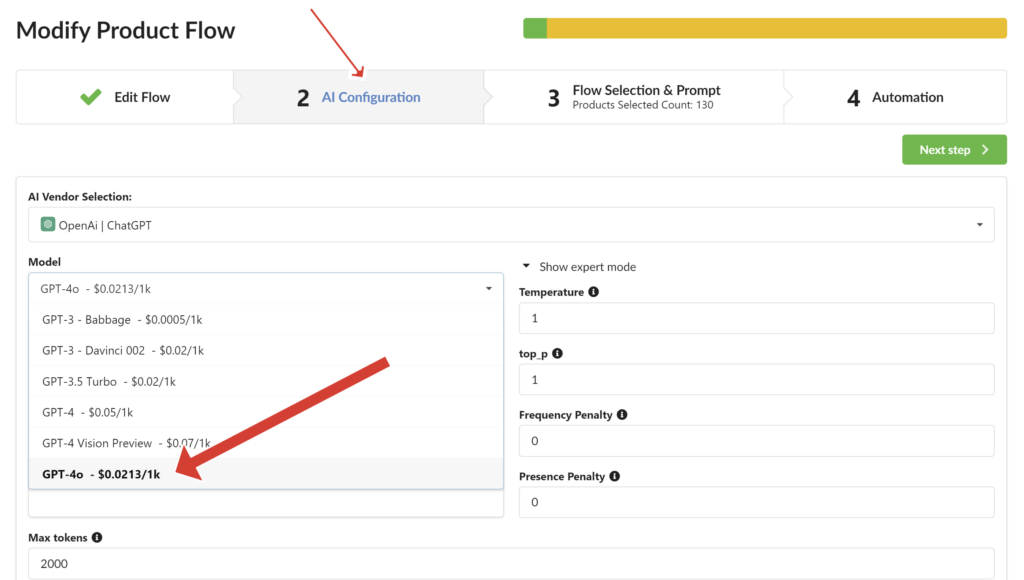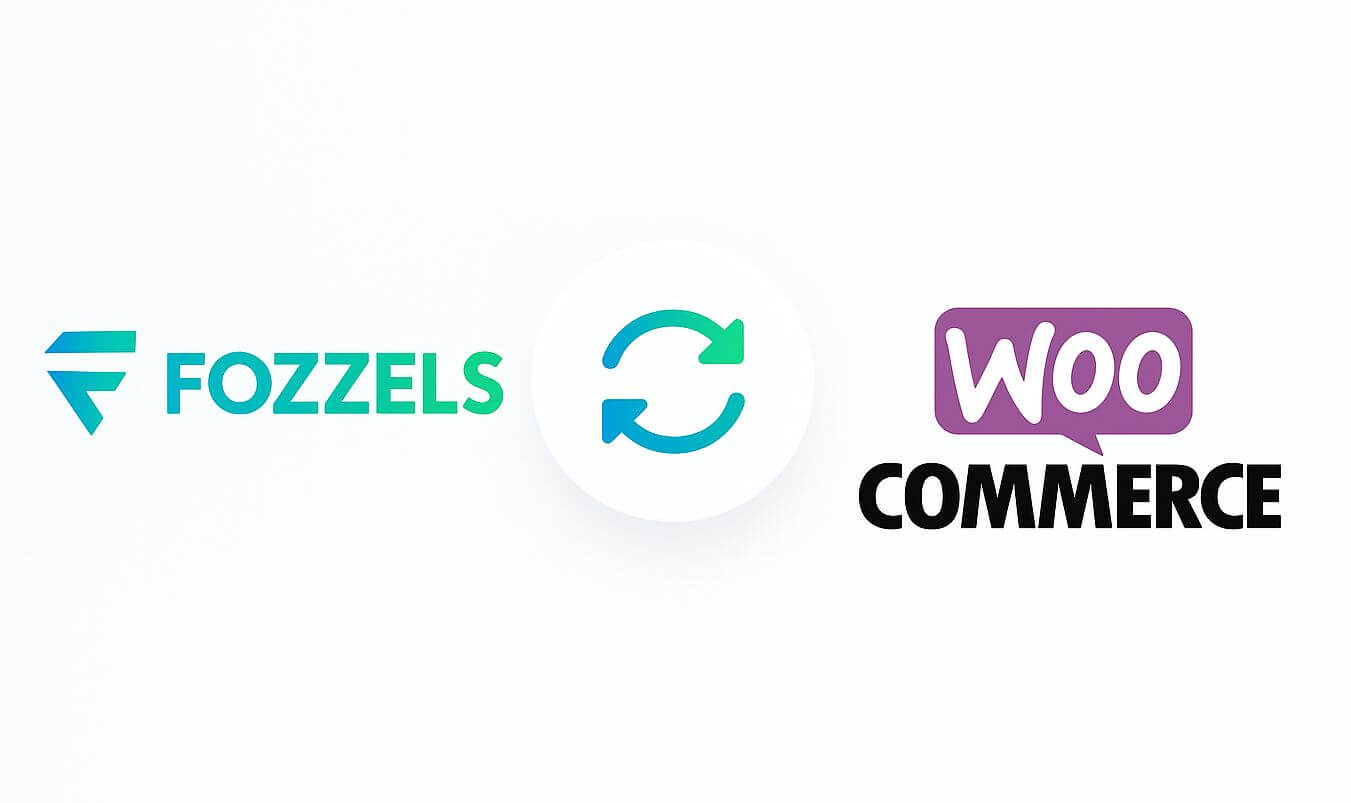OpenAI’s new GPT-4o is now available for use within the AI automation software Fozzels!
GPT-4o (o stands for “omni”) is OpenAI’s new flagship model that can reason over audio, image and text in real time.
We recommend that all Fozzels users switch to this new LLM (large language model) in their “Flows”.

GPT-4o Vs GPT-4: Which Model Is Better?
See how OpenAI’s GPT-4o outperforms GPT-4 when compared on various benchmarks and learn all the new features that GPT-4o brings.
OpenAI, which has contributed greatly to the development of AI chatbots and large language models, announced its most advanced and newest model, the GPT-4o, on May 13, 2024. The GPT-4o model has higher performance and speed than its predecessors and a wider variety of use cases. The GPT-4o model offers much faster response by solving the speed problem, which was the main drawback of its predecessors.
TL;DR
- The GPT-4o model was announced by OpenAI on May 13, 2024 and is a “multimodal” AI.
- With GPT-4o, you can quickly process textual, visual and audio input and generate content.
- The GPT-4o model is faster and cheaper than its predecessor, the GPT-4 model.
- The GPT-4o model outperformed the GPT-4 model in benchmarks such as MMLU and HumanEval.
- Unlike the standard GPT-4 model, the GPT-4o model now has vision capabilities; in other words, pictures can be read.
- The GPT-4o model is trained with online data until October 2023 and, unlike GPT-4, has no web access.
What is GPT-4o?
The GPT-4o model is OpenAI’s newest and most advanced AI model, built on the GPT-4 Turbo model and announced on May 13, 2024. The GPT-4o model also has better performance in areas such as output speed, response quality and supported languages, which its predecessor lacked. The GPT-4o model can generate better quality, grammatically correct and concise output not only in English but also in non-English languages.
What’s new in GPT-4o?
The main difference between the GPT-4o model and its predecessors is that it uses a single neural network instead of separate neural networks to process different types of input data. In this way, unlike its predecessors, the GPT-4o model can detect background noise, multiple speakers and emotional tones in the inputs and add them to the output generation process.
GPT-4o Pricing (API)
You don’t have to pay any fees to access and experience the GPT-4o model. ChatGPT offers the GPT-4o model with limited creation by default. However, if you want to use the GPT-4o model 5 times more, you need to purchase the Plus subscription, for which you need to pay $20 per month. Fozzels users use the OpenAI API, which means there is no extra subscription needed. Using GPT-4o via the API costs less than GPT-4.
OpenAI’s GPT-4 vs. GPT-4o comparison
OpenAI’s GPT-4o model was announced with exciting features and managed to outperform its predecessor, GPT-4, in most benchmarks. Let’s compare the GPT-4 and GPT-4o models and discover their similarities and differences.
Performance
According to OpenAI’s GPT-4o article, the GPT-4o model supports both GPT-4 and GPT-4T models with MMLU (88.7%), GPQA (53.6%), MATH (76.6%), HumanEval (90.2%), MGSM (90.5%) and managed to outperform its benchmarks. For example, the GPT-4o model has a score of 53.6% in the GPQA benchmark, while its predecessor, the GPT-4 model, has a score of 35.7%.

GPT-4 vs. GPT-4o
Moreover, the GPT-4o model outperformed its predecessor, the GPT-4 model, with a score of 83.4% in the DROP benchmark, but lagged behind the GPT-4 Turbo model with a score of 86.0%. In other words, the GPT-4T model outperforms GPT-4o in advanced coding and reasoning tasks.
Multilingual tasks
Another area in which the GPT-4o model outperforms its predecessor, the GPT-4, and makes up for its shortcomings, is multilingual tasks. The GPT-4o model has been trained by OpenAI to generate better performance and more concise output in non-English tasks. The GPT-4o model performs better in both multilingual and vision, especially in Afrikaans, Chinese, Italian, Javanese and Portuguese. In other words, the GPT-4o model can handle non-English languages in both text and vision with better performance than GPT-4.

Vision Capabilities
Since the GPT-4 model has no vision capabilities, the GPT-4o model is a better choice for visual tasks than GPT-4. However, GPT-4o performs better in vision comprehension, processing and analysis than GPT-4T, OpenAI’s large language model with vision capabilities. In addition, the GPT-4o model can process visual input and generate related output much faster than the GPT-4 Turbo model.
Output speed and speed limits
The main problem with the GPT-4 model is its lower output speed compared to the Claude 3 Opus and Gemini Ultra models. The GPT-4o model managed to outperform both competing models and the GPT-4 model by generating a 488-word response in 12 seconds. The GPT-4 model takes about 1 minute and 10 seconds to generate a 488-word response. In addition, the GPT-4 Turbo model, which stands out for its high speed, takes 24 seconds to generate an output of 488 words.
The GPT-4o model sets a new benchmark not only in text output but also in speech output. The GPT-4o model delivers audio output in 320 seconds. A normal person pauses for 250 milliseconds to respond in English. That makes the GPT-4o model an artificial intelligence that speaks faster and more fluently than humans.
Training data and Web access
One of the only points where the GPT-4 model is better than GPT-4o is web access. The GPT-4o model currently has a 128K context window and publicly accessible online data until October 2023. In other words, the GPT-4o model cannot generate output on current issues. That makes GPT-4o unusable for marketing, SEO and research-related tasks.
In short, this new LLM by OpenAI is an improvement over the current GPT-4 and GPT-3.5 models — and we encourage all Fozzels users to switch their Content-generation Flows to this new and improved model.
How to use the new GPT-4o in Fozzels?
If you would like to use the new GPT-4o model in Fozzels, it takes only a couple of steps.
- Log into your Fozzels dashboard, and open a Flow.
- Click on the “AI Configuration” tab
- Select “GPT-4o” from the drop-down selection box
- Click “Save”.

Should you have any questions, feel free to reach out to us at email support@fozzels.com.







